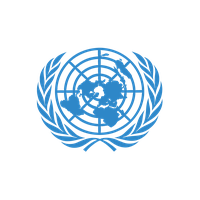
Ozone Day
Taking place on 16th September every year.
Remembering the Montreal Protocol to protect the ozone layer.
About the day
The United Nations General Assembly proclaimed 16 September the International Day for the Preservation of the Ozone Layer, commemorating the date, in 1987, on which the Montreal Protocol on Substances that Deplete the Ozone Layer was signed. The first celebration was held in 2000 and through the landmark Montreal Protocol the Ozone hole is expected to return to normal mid-century.
How to approach it
This Montreal Protocol is the best example of an extremely effective, international environmental agreement. This day therefore is about inspiring your class with this achievement and drawing parallels to what kind of agreement is needed for the wider environmental and ecological crisis.
First, look into the basics of the Montreal Protocol and find similarities with the climate crisis. In 1973 the first scientific papers were published that highlighted the risks behind using certain chemicals (CFCs) and the depletion of the ozone layer. It was discovered that the depletion of the ozone layer would stop the absorption of UV light and thus increase skin cancer, damage crops and harm marine life. As with climate change, this science was disputed by the chemical industries responsible for producing CFCs. However, in this case, they couldn't get enough political support and only 14 years after the first scientific evidence came out, the Protocol was signed. The protocol reached an agreement to equitably reduce CFCs by supporting developing countries financially.
Fundamentally, this shows that a global deal to prevent harmful climate change is possible and that this deal can be effective. All that is missing is enough political support and global cooperation. Of course there are global protocols to tackle climate change in place such as the Paris agreement and the Kyoto Protocol, but the consensus is that neither is sufficient to fully address the problem. Discuss with your class about what we can learn from the Montreal Protocol. One takeaway you could suggest is that people with economic interests in harmful industries often drag their feet about unilateral action. Another could be that agreements work the best when they offer support to poorer nations. The question you could end with is: how can we build a similar level of political support for climate action? Answers for this could include street outreach, attending demonstrations, holding events or talking about climate change on social media.
Organised by
United Nations

Conversation starter
The hole in the ozone layer is now shrinking due to an international ban on the chemicals that were causing the hole: CFCs. This is a great example of effective climate crisis action, as without this ban the Earth would be at least 25% hotter. What other international agreements do you think we need to stop the climate crisis?




